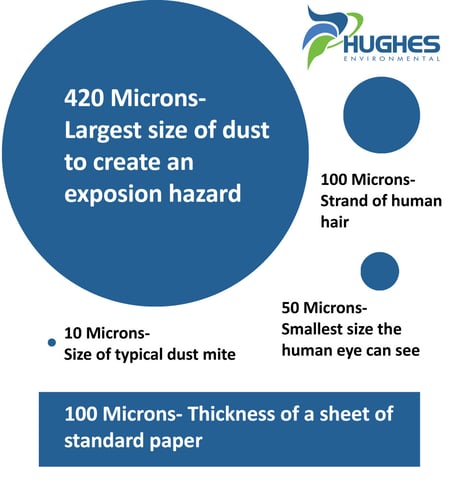 When NFPA 654 defines combustible dust it is “any finely divided solid material that is 420 microns or smaller in diameter and presents a fire explosion hazard when dispersed and ignited in air”. This makes sense on the surface, but do you really understand what size 420 microns actually is?
When NFPA 654 defines combustible dust it is “any finely divided solid material that is 420 microns or smaller in diameter and presents a fire explosion hazard when dispersed and ignited in air”. This makes sense on the surface, but do you really understand what size 420 microns actually is?
What is the size of dust particles, and how does this affect cleaning procedures?
To help put this number in perspective, the thickness of both a human hair and a standard piece of paper are 100 microns. This means that the largest size of hazardous dust is over four times the thickness of paper and hair. The human eye can’t see anything about half that size, at 50 microns. In a gram of dust there can be up to 500 dust mites, which doesn’t get crowded when they are only 10 microns in size.
Other than explosion hazards, how do the different sizes of dust cause issues?
In a typical setting, only about 10% of the dust is large enough to be visible to the naked eye. Most dust particles are 5 microns or less, which are so small that they can’t be seen and tend to remain suspended in air for so long that only HEPA filters can take them out. This means that for every piece of dust you see floating in the air there are 9 more that are too small for you to see.
Dust particles that are 2.5 microns or smaller are able to get past the nasal passages and are thought to settle in the lower sections of the lungs, where they can’t be brought back up. Some dusts can be dissolved into the bloodstream and filtered out that way, but others cannot dissolve. These non-dissolvable dusts cause health issues such as allergies, respiratory problems, lung disease, and in some cases even cancer.
Want to remove dust from your facility to prevent explosions and keep employees healthy? Contact us now to find out how we can help.
888-845-3952 or Contact Us
Hughes Environmental technicians are expertly trained in the best methods for cleaning combustible dust hazards and use equipment specifically designed for combustible dust cleaning.
Hughes Environmental is a National Air Duct Cleaner’s Association (NADCA) certified company who has earned their prestigious “Outstanding Safety Award” every year that we’ve been in business.
Our technicians are trained on the most up-to-date industry standards for cleaning commercial HVAC systems, and are equipped to clean from the point the air enters the system all the way to where it exits.

